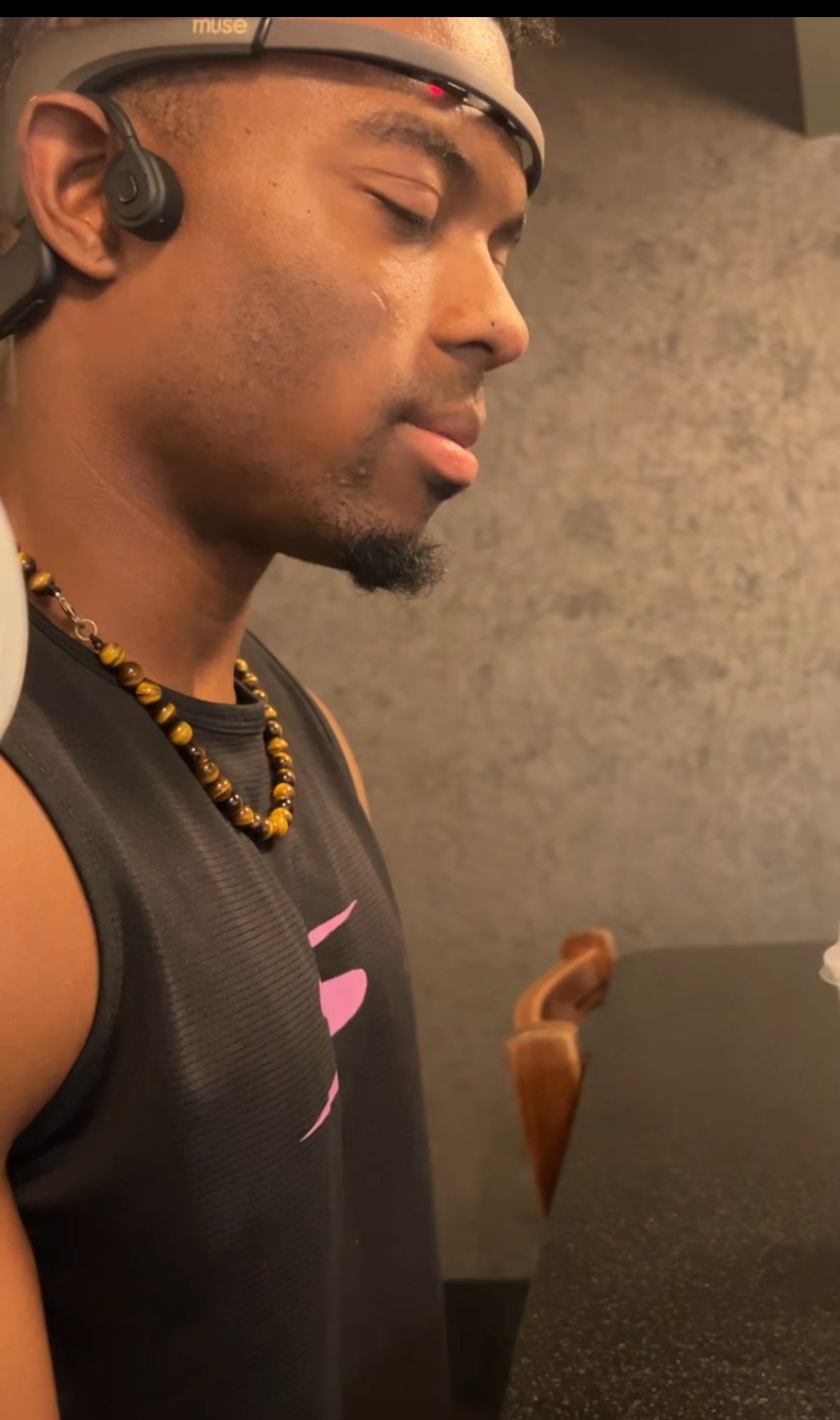It’s not every day that neuroscience and Starbucks collide. Yet that’s exactly where J Johnson, founder of High Frequency Highway, decided to test a bold idea: can binaural beats really shift the state of the human brain—even in the middle of a noisy café?
Instead of relying on polished lab studies we chose a raw, real-world environment. J put on a Muse EEG headset and his company’s frequency headphones, he put his own brain under the microscope.
The Setup: Science in a Coffee Shop
J slipped on a Muse 2 EEG headset, a device designed to read electrical activity in the brain.
Step one: record three minutes of baseline brainwaves in Starbucks without headphones.
Step two: record another three minutes while wearing High Frequency Highway’s headphones, tuned to two distinct tones:
-
100 Hz in the left ear
-
160 Hz in the right ear
The HFH frequency generator paired with frequency headphones deliver a vibration and frequency pure tone that works directly with your bone and works on a cellular level.
Together, the difference between those tones created a 60 Hz phantom frequency—the binaural beat his brain would “hear.”
The question was simple: would this invisible beat make a measurable impact on his brain’s rhythm?
The Results: From Calm to Switched-On
The EEG readings told the story.
Before the HFH headphones, J Johnson’s brain leaned toward theta and alpha waves—the slower rhythms linked to relaxation, daydreaming, and idle thought.
After just three minutes of listening, those slow waves dipped, while beta and gamma activity surged. These are the faster rhythms tied to focus, alertness, and engagement.

In plain terms, J Johnson’s brain shifted from relaxed mode to active, engaged mode—not in a lab, but in the middle of a bustling café.
Why It Matters
Plenty of wellness trends make bold promises. What makes this experiment stand out is that:
-
The test happened in a real-world, noisy environment, not a sterile lab.
-
The subject was the founder himself, putting his claims to the test.
-
The results showed a clear, measurable change in brainwave patterns after just minutes of exposure.
Takeaway
J Johnson’s High Frequency Highway Starbucks experiment doesn’t claim to answer all questions about binaural beats. But it does prove one thing: the brain can respond to these phantom frequencies in powerful ways, shifting gears from rest to focus in minutes.
So the next time you sit down with a latte and a to-do list, you might wonder—could a pair of headphones help flip the switch in your own brain, too?
If you're curious secure your pair: here



Share:
The Hidden Power of Sound: How Ancient Civilizations Used Frequency for Healing and Manifestation
Why Is HFH The Best Way To Listen To Binaural Beats